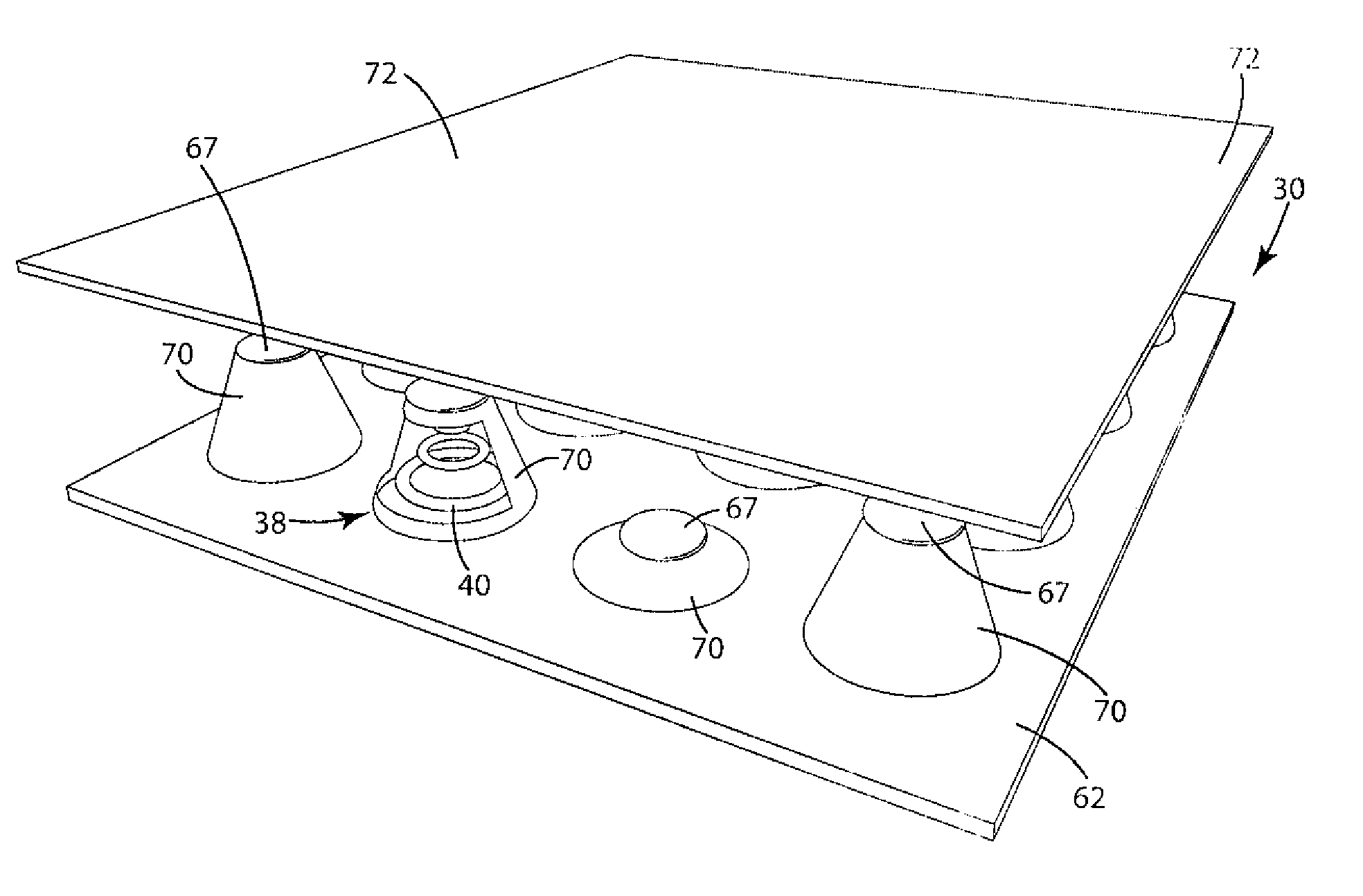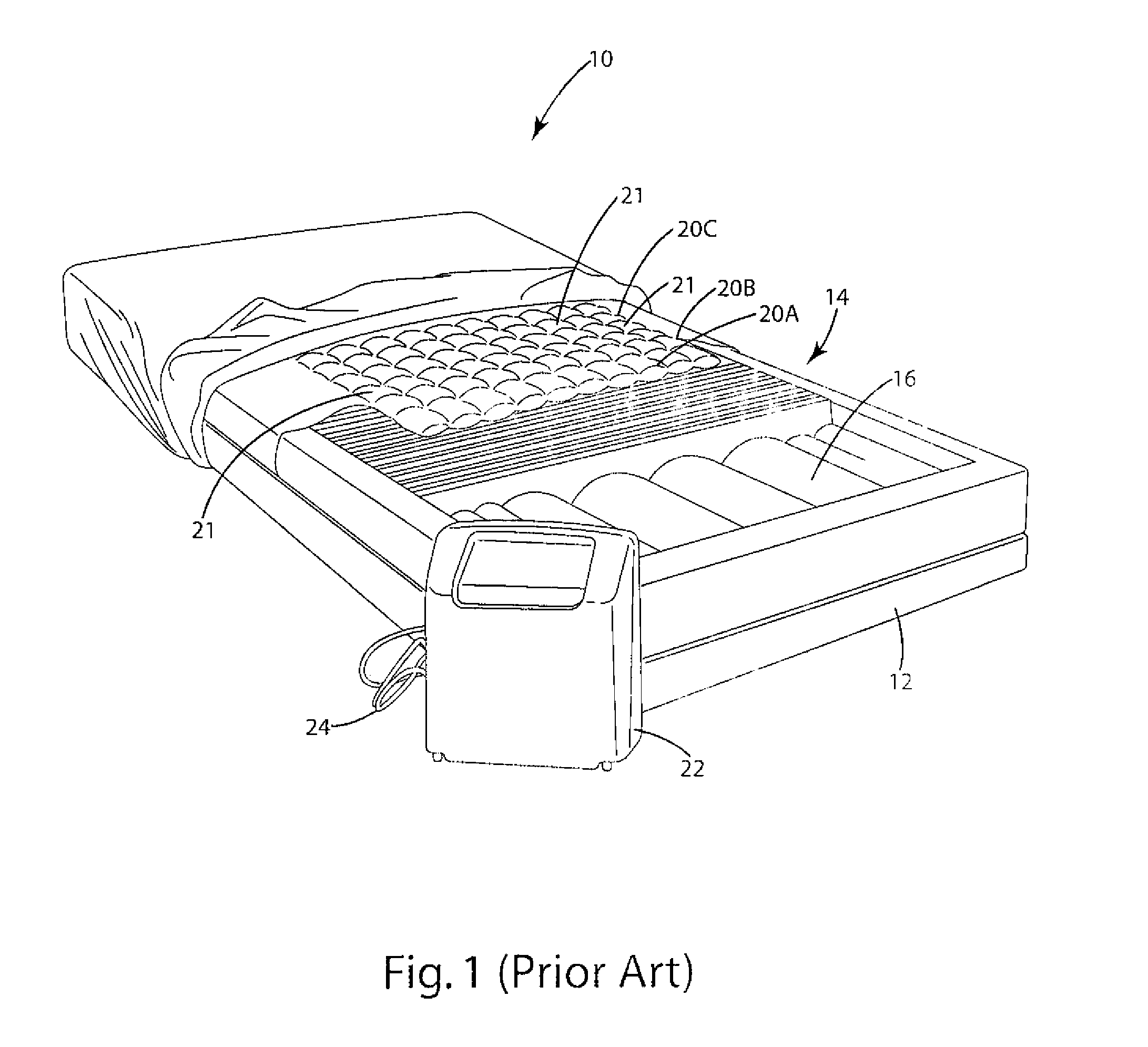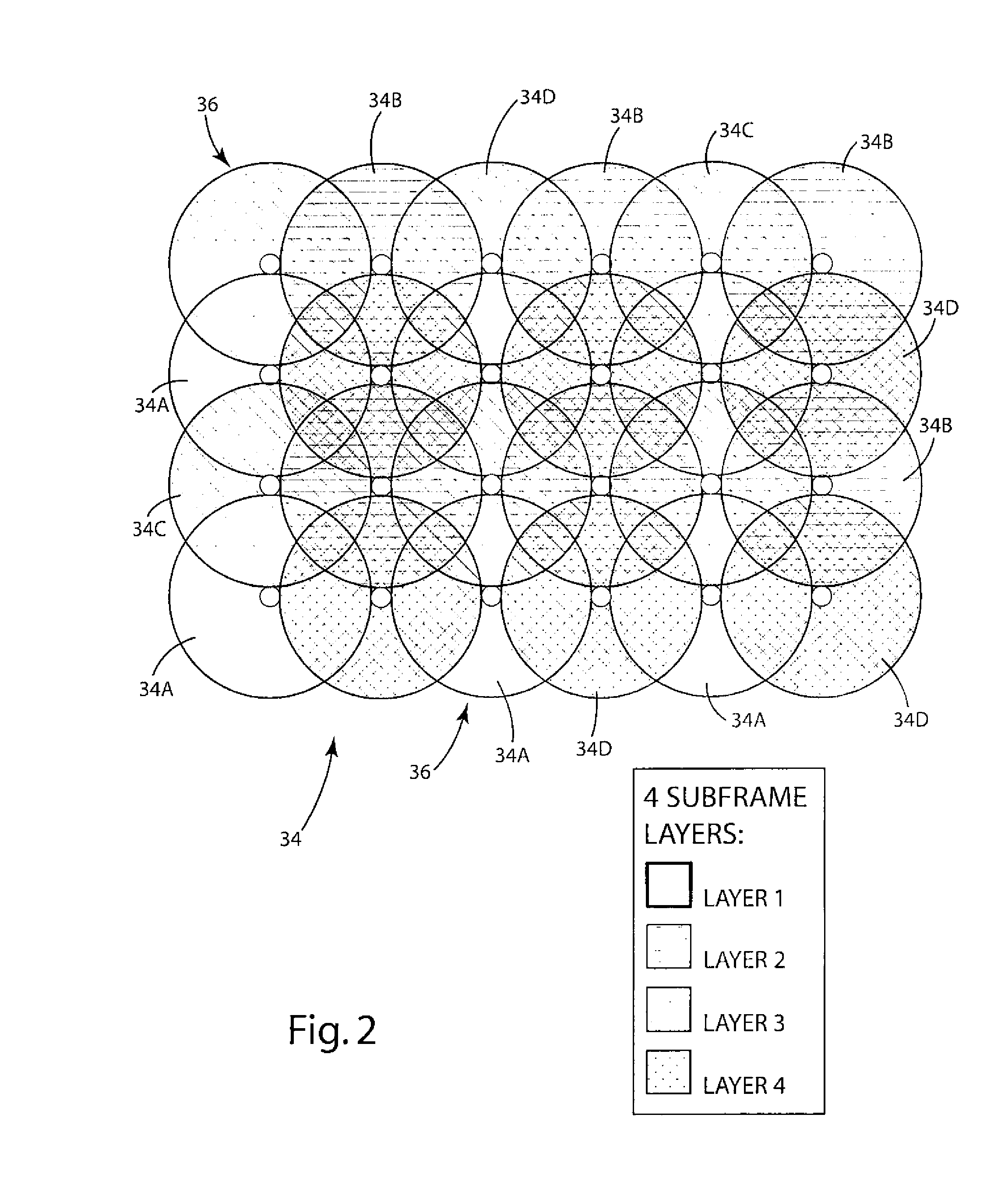However, because of the nature of most gels, the
accommodation of the gels to relatively high forces is somewhat limited.
They are sometimes perceived as noisy, uncomfortable and unreliable.
This is as a result of the mattresses' inherent lack of stability.
This lack of stability also complicates
patient transfers and CPR administration, and hinders a patient's efforts to self-mobilize.
It has been well established that
tissue damage is often apparent following prolonged loading, even at relatively low level pressure intensities.
However, because the cells that compose alternating pressure mattresses are large, the relief they provide to the deep tissues is imprecise.
Moreover, there is a risk, again due to
cell size, that when one row of cells is deflated, localized pressures over an adjacent (inflated) row of cells will attain unsafe levels, as that portion of the body is asked to bear more of the patient's total
body weight.
Considering that at-risk patients are supposed to be turned by staff at least every 2 hours, the degree of alignment is not assured.
Finally, and perhaps most importantly, the cycle times of alternating pressure mattresses are long (measured in minutes) and thus may significantly prolong tissue
recovery times in
high risk patients.
There is strong evidence that surface (interface) pressures are not representative of the internal mechanical conditions inside the tissue, which are most relevant for tissue breakdown, especially when tissue geometry and composition are complex and surface pressures result in highly inhomogeneous internal mechanical conditions.
Short term loading generally produces elastic
recovery, while long term loading results in the
creep phenomenon and requires a longer time for complete tissue
recovery.
Most of these products use electromechanical actuators to generate the massaging motion, which limits the precision, speed, flexibility and dexterity of these motions, as well as the ability of the user to control them.
Also, because electromechanical actuators are bulky, the technology does not lend itself to broader application.
Further, an occupant's comfort preferences may evolve over time, so the likelihood that a particular type of mattress will satisfy its occupants for the duration of its warranty period (typically 10 years) is low.
However, the
cell size in these mattresses is large and, consequently, the adjustments are gross in nature.
Existing mattresses are incapable of determining occupant positions and unable to adjust their contours.
A cursory examination of the technologies used in conventional
specialty mattresses and overlays reveals their limitations as enabling technologies for these new concepts.
An implementation based on air- or fluid-filled cells would require hundreds of cells and valves, and a complex and expensive routing
system (for air or fluid) to
control cell movements independently.
Achieving the combined force and speed necessary for effective relief, given the size constraint imposed on individual cells, would be very difficult.
Also, aside from presenting a daunting manufacturing challenge, such an implementation would be noisy.
Electromagnetic actuators are generally large, heavy, expensive, noisy and power-hungry.
While they can generate considerable linear force, they do not provide the combination of speed and precision necessary for comfortable, effective relief.
An implementation based on pneumatic actuators would require hundreds of valves and a complex and expensive routing
system (for the
compressed air that drives these actuators) to control
actuator movements independently.
Aside from being noisy, and similar to electromagnetic actuators, pneumatic actuators do not provide the combination of speed and precision necessary for comfortable, effective relief.
In addition, EAPs consume very little power, and enable the construction of relatively small devices.
 Login to View More
Login to View More  Login to View More
Login to View More 


